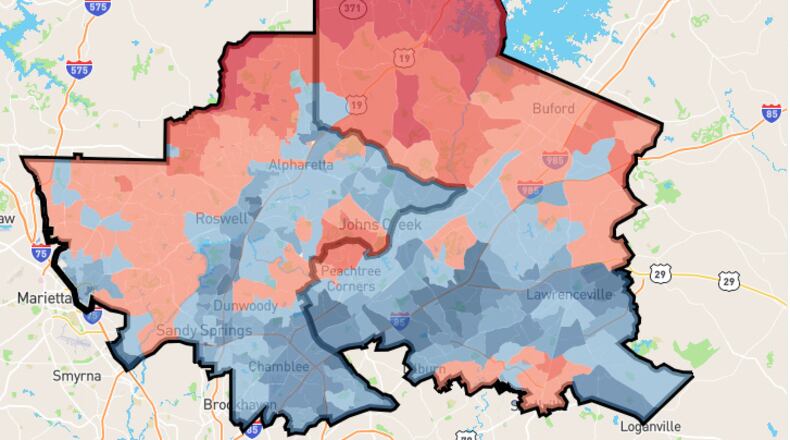Every 10 years, Georgia lawmakers carve the state into districts and get to select the voters who will elect — or reject — them.
The process is called redistricting and can get excruciatingly technical. It can help decide whether Republicans or Democrats control the state. For instance, in the 2020 November election, Republicans won about 51% of the vote in major elections. But they won 61% of the state Senate seats, in part because of the way they divvied up the voters back in 2011.
Republicans currently control the state Senate and House, so they are in charge of the redistricting process. A few decades ago, it was the Democrats who tilted the maps in their favor. In 1990, for instance, nine of the state’s 10 U.S. House members were Democrats.
The legislature’s redistricting special session will begin Nov. 3 and last about three weeks.
How are districts drawn?
Georgia has 14 U.S. House members, 56 state senators and 180 state House members. The recently released U.S. census put the state’s population at more than 10.7 million people. Districts must have an equal number of people, which means there should be about 765,000 people in a U.S. congressional district, 191,000 in a state Senate district and 60,000 in a state House district.
From there, lawmakers have to try to make the districts compact and ensure demographic groups have representation. But Republicans will have some latitude to draw maps in their favor.
How has Georgia’s population changed?
Even though Georgia has added 1 million people since 2010, the state’s 159 counties grew at very different rates. More than 40% of Georgia’s counties — 67 in total — saw their population decline in the past 10 years, according to the census. The eight counties that added the most people were all in metro Atlanta and accounted for more than 651,000 people.
What is the state’s current balance of power?
Republicans have the advantage in the U.S. Congress, state Senate and state House. Democrats have been chipping away at the lead in recent elections.
How will districts change?
The current maps were drawn a decade ago. The challenge will be on rural districts in the southern and middle parts of the state. Many of those districts are undersized, and their neighboring districts are also undersized. That means simple border shifts may not be enough to erase the deficit.
What about the U.S. House?
In the past two election cycles, Democrats have picked up two suburban Atlanta U.S. House districts. What had been a 10-4 advantage for Republicans has slipped to 8-6. Republicans may look to redraw the 6th and 7th districts to help them regain their overall majority in the U.S. House.
What’s gerrymandering?
Gerrymandering is manipulating the boundaries of a political district to influence an election. Democrats and Republicans don’t always agree on when that happens, and it may hinge on which party is in power.
One example is Athens-Clarke County — one of the most Democratic areas in the state. But Democrats control just one of seven elected legislative and congressional seats that take in part of the city and county. Republicans hold two of three state House seats, both state Senate seats and both congressional districts that include Athens.
The University of Georgia is split among three state House districts. A person could take a short walk, cross two streets and pass through all three districts.
The net result is one extremely Democratic House district and two others that include large areas of conservative voters so that Republicans can win them.
The story is similar for the county’s two Senate seats.
What is a downside to gerrymandering?
It often means incumbent politicians don’t face a realistic chance of losing an election. In 2020, 90% of U.S. House and state legislature elections were not close.
About the Author
Keep Reading
The Latest
Featured














